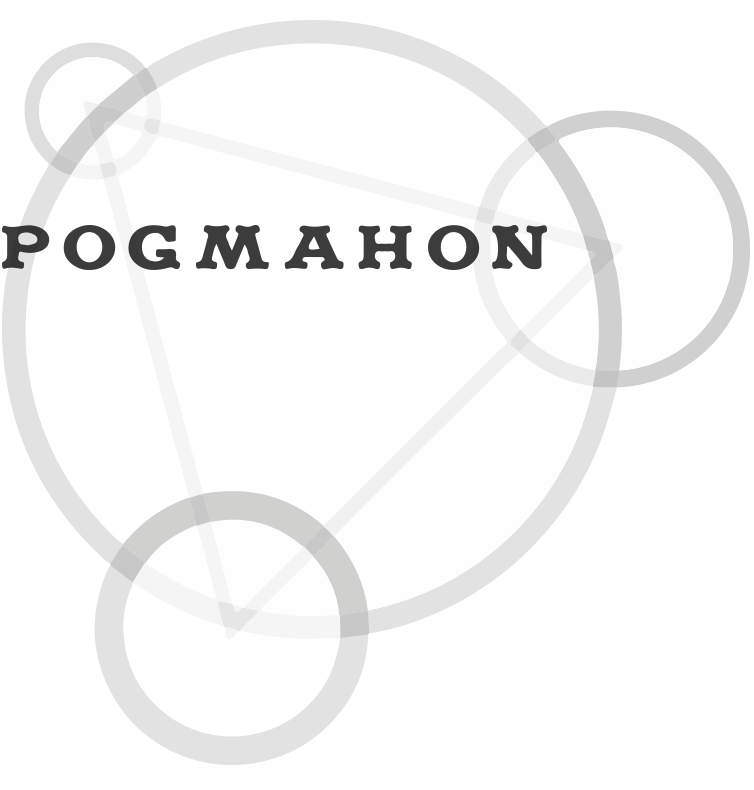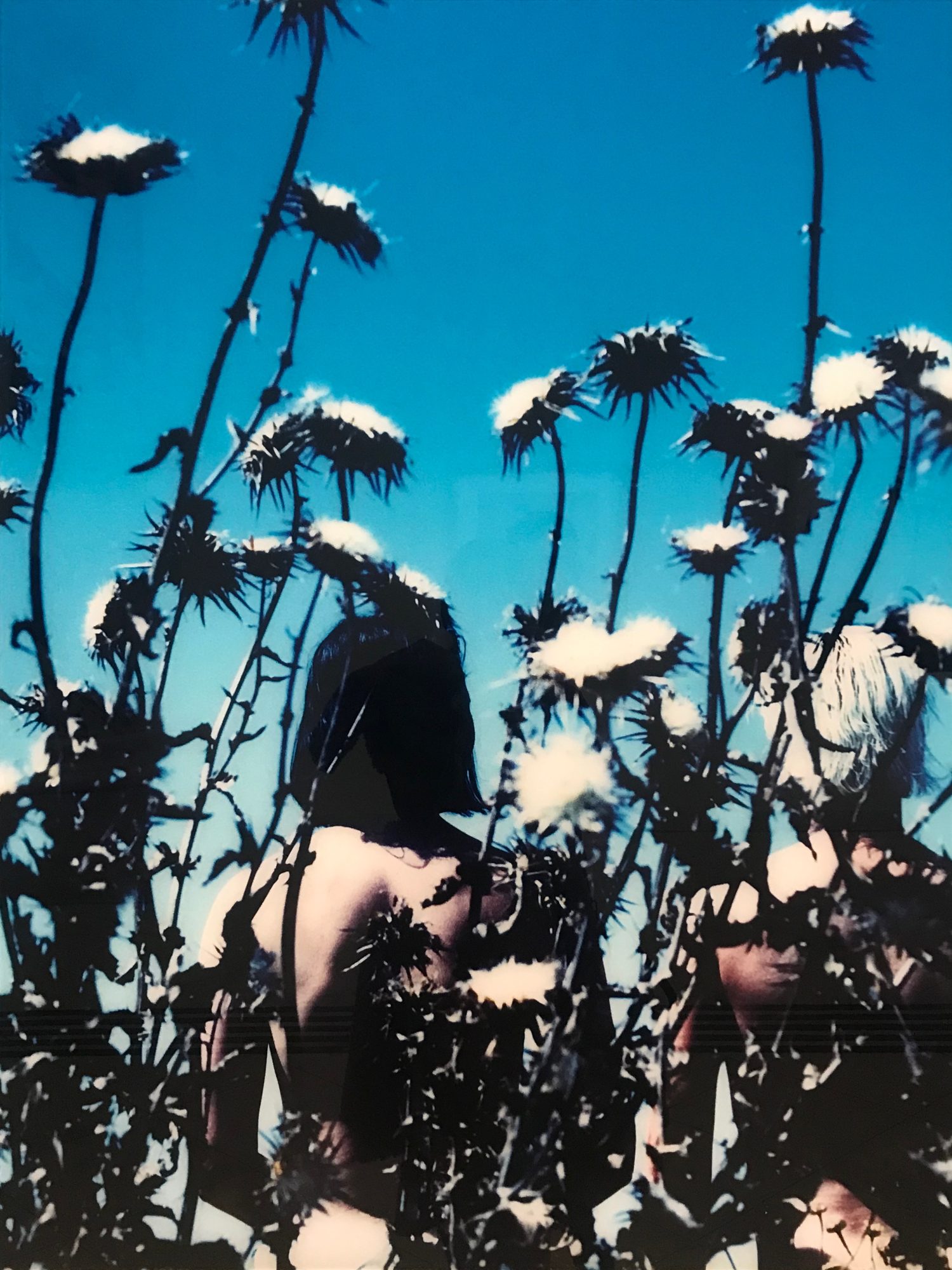TEXT
Denise Parizek is art historian and curator. She founded pogmahon.art.club in 2000 and directed Schleifmuehlgasse 12-14 in Vienna over 10 years. Since 2019 she is member of 12-14 contemporary and has been curating international projects in Canada, Romania, Slovenia, Serbia, Croatia, Mexico, Hungary, Poland, Turkey and Vienna since 2008.
Text published in Revista Arta print and online about
This Movie is a Gift /RA online
58th Biennale / RA print
Art & Science Univeristy of Applied Arts Vienna
Natural History /RA print
Frederick Kiesler /RA print
Vienna Art Week Special / RA print
Favourite Darkness Anton Corbijn
15.2. – 29.6.2025
Kunstforum Wien
Kuratorin Lisa Ortner-Kreil
Favourite Darkness versus Unfavoured Darkness
After what felt like an eternity of waiting, Anton Corbijn also had his chance to speak at the opening of his show Favourite Darkness. When asked how much new technological developments influence him and his work, he laconically replied that he is aware of AI and technical achievements, but that he is not distracted by them. A large part of the Vienna exhibition is photographed in analogue, but he also uses his digital camera.
He has no affinity with perfection, he loves mistakes, the imperfect, the human.
This is exactly what makes his pictures great works of art.
The coarseness, the contrasts, sometimes super sharp, then again washed out in the light, the people depicted, all unique in their own right. Not because they became or are famous people, no, because they are special people. People with a desire for life, with humour and deep sadness, with talent and artistic expression in their being.
Yes, he was the creative director of Depesche Mode and U2, he shaped the style of both bands for decades, but I don’t get the impression from his films, photos and PR concepts that Corbijn is interested in success or fame. Corbijn is concerned with depth, with art in and of itself.
The fact that religious iconography became the theme of this exhibition can only reflect the zeitgeist. Religion and sexual preferences are a private matter for me, and just because Anton Corbijn photographs graves doesn’t mean we have to open a religious debate.
Even the gravestones appear authentic and melancholic, regardless of which faith they can be categorised as. Such a discussion completely misses the point of Corbijn’s art and visual language.
He says himself that he wanted to be close to artistic, creative people, to capture moments with his camera that are irretrievable, undisguised and unstaged.
This is precisely what makes Anton Corbijn a great photographer, filmmaker and artist, in all his modesty.
Several of his films will be shown at the Gartenbaukino during the exhibition period.
(including THE AMERICAN (2010), A MOST WANTED MAN (2014) and LIFE (2015), he made his feature film debut in 2007 with CONTROL, a haunting biopic about Ian Curtis, the late singer of Joy Division).
It is pathetic that I have to point out a political and economic plight in this exhibition that makes me gasp. Dr. Ingrid Brugger referred to the precarious situation of the Kunstforum Wien because Bank Austria is withdrawing its funding. In order not to become polemical, I quote economic news, let everyone make up their own mind.
Profit in the billions: Bank Austria made strong gains in 2024
11.02.2025 at 15:12
The Austrian subsidiary of the major Italian bank UniCredit earned very well in the fourth quarter. Bank Austria’s net profit totalled 289 million euros in the fourth quarter of 2024, compared to 192 million euros in the same quarter of the previous year. For the year as a whole, the bottom line was a profit of 1.29 billion euros, 14.2 per cent more than in the previous year. Revenue also developed positively.
2025
Images
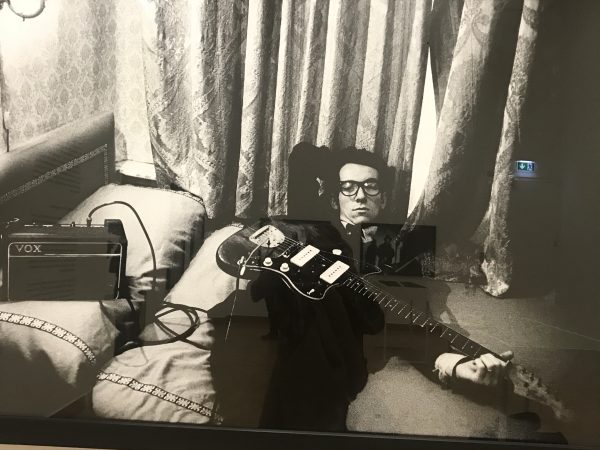
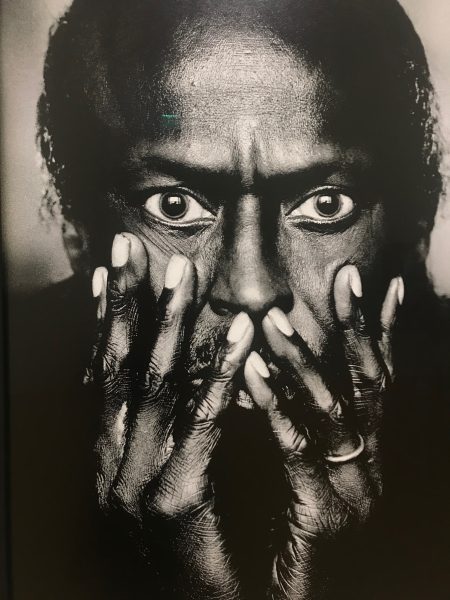
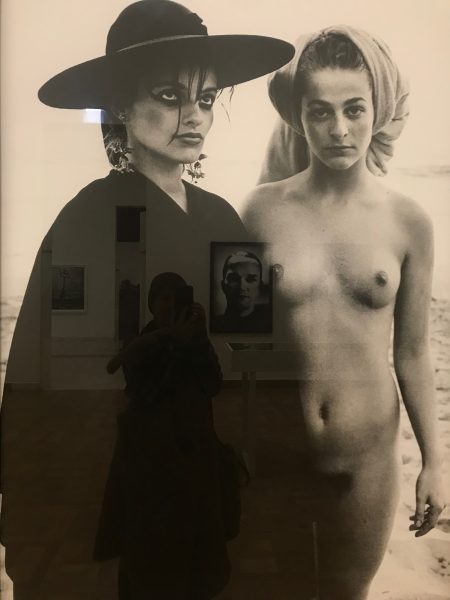
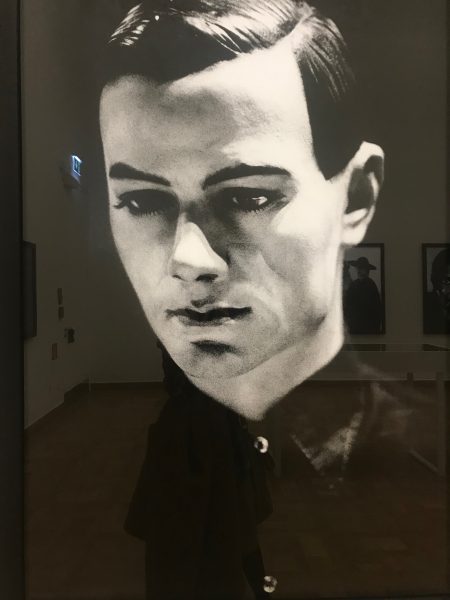
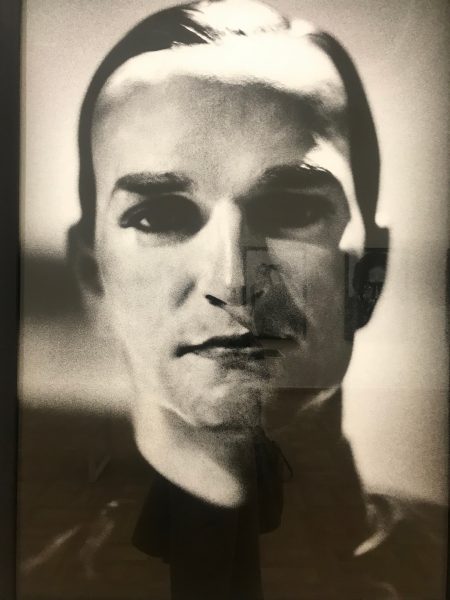
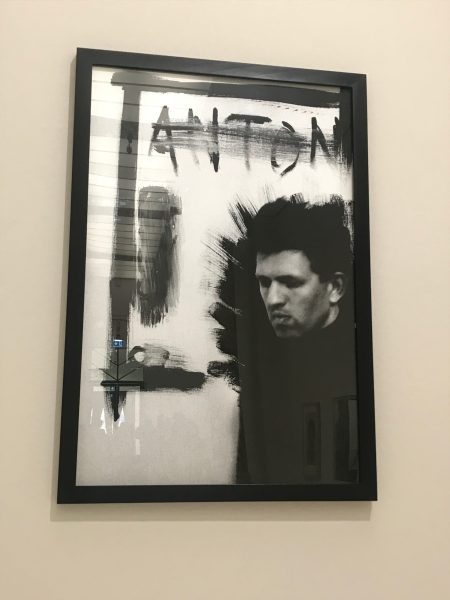
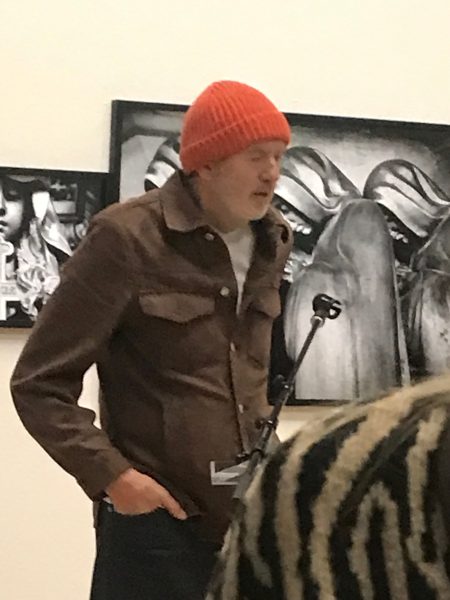
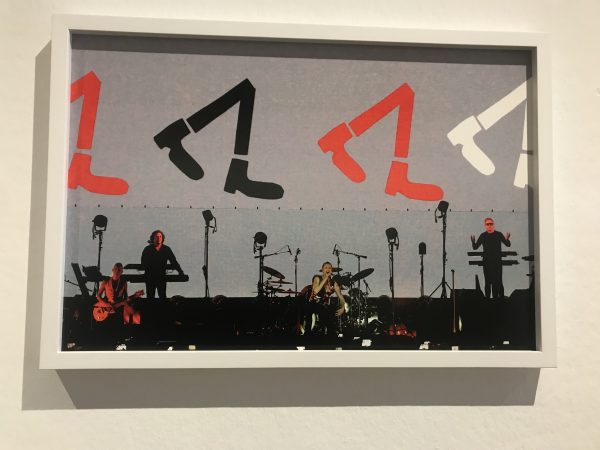
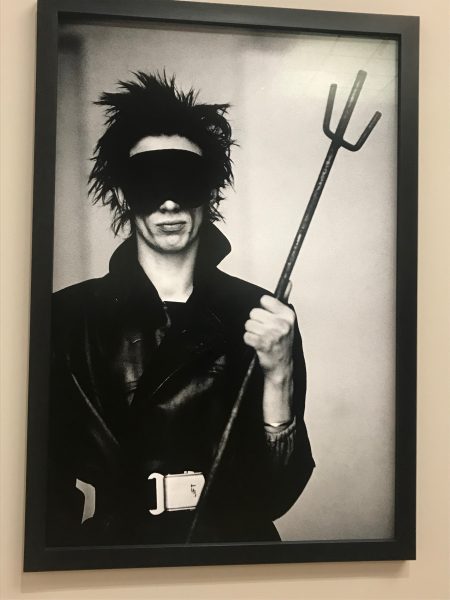
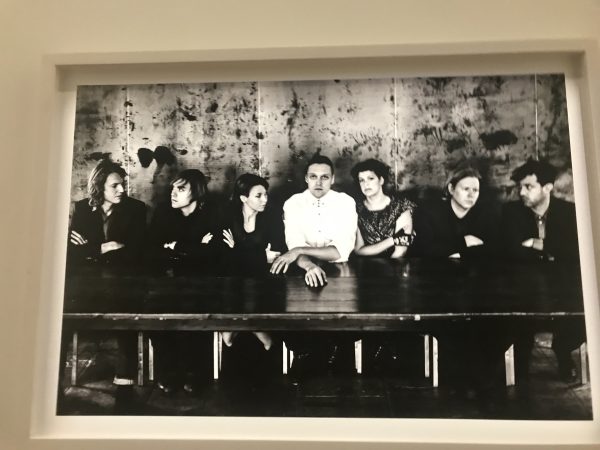
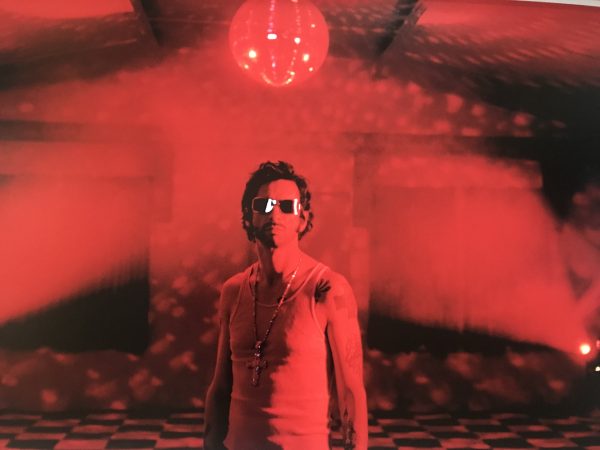
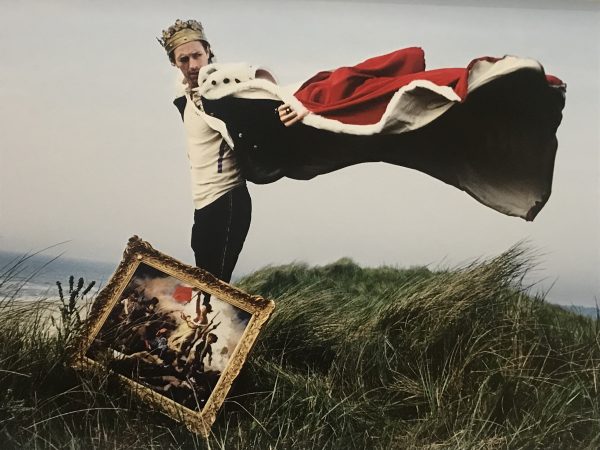
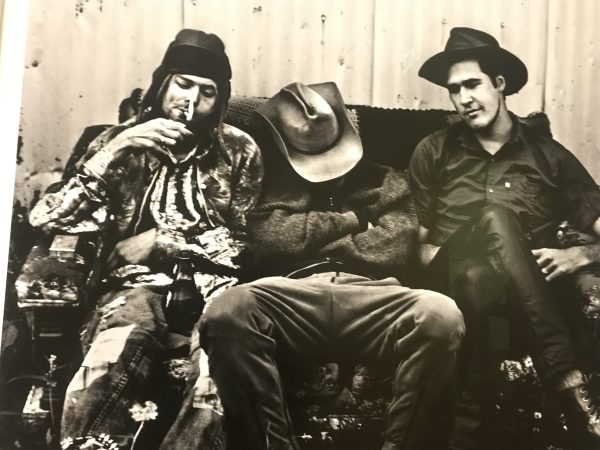
DIESER FILM IST EIN GESCHENK | THIS MOVIE IS A GIFT
A FILM BY ANJA SALOMONOWITZ
WITH DANIEL SPOERRI | OSKAR SALOMONOWITZ | FEDERICO VECCHI
”I ONLY ARRANGE COOKING SPOONS AND I LOOK LIKE AS IF I JUDGE ABOUT LIFE AND DEATH”
Daniel Spoerri
Like an arbitrator of life and death, concentrated on spoons, doll heads, tiny animals, kitchen appliances of all shapes, Daniel Spoerri creates new interpretations of old stuff, filling junk with significance. Kicking the wheel of life with a new impetus, turning things upside down and save them before their ending.
Anja Salomonowitz latest work is Dieser Film ist ein Geschenk / This Movie is a Gift, 2019, an interview like a documentation about Spoerri ́s way of thinking and working. The film originated from a private connection between the director and the artist.
THIS MOVIE IS A GIFT is a film about the artist Daniel Spoerri, about generations and about life and death. A cyclical conception of coming and going, of transformation. The introduction, Resurrection, a shortfilm by Daniel Spoerri and Tony Morgan, made 1969, clearly indicates the direction of the movie. We can consider the procedure of digestion from the beginning to the end or vice versa, a constant cycle, like life to death. But this film is not a sad movie, quite the contrary. For example when Spoerri mentioned, if the decendent for instance, would still be in his room, there would be a big scramble. A entanglement of dimensions like in Sartres play Les jeux sont faits. Being one of the last ones, seeing friends passing away, the tragedy of the survivors.
There is another bereavement appearing. After the death of Anja Salomonowitz ́s father she had to empty his house and she found some black spoons and a red heart made of glass. She could have dumped these objects or they could be basic material for Spoerri. So she gifted these family objet trouvé Spoerri and he made out of that precious remnant a gift for her. Kind of the principle of potlatch, Anja decided to create another donation for the artist and she made the movie.
Salomonowitz thanks Spoerri with a portrait that links his work with objects over and over again to his biography: Spoerri, born Feinstein, was the son of a Romanian Jew who was abducted and murdered. At the same time, the film looks ahead and extends a memory by Salomonowitz ́s son Oskar as a stand-in and reflector on Spoerris stage. Nothing is lost, everything is always reassembled in surprising ways. An infinite loop of repetition and renewal that is particularly evident in the contrasting juxtaposition between Spoerri and Oskar.
Oskar Salomonowitz, at the shooting time 10 and Daniel Spoerri 88, are talking about life and work and their time-depending different approaches. Oskar is not only mirroring the artist in action, not only copying his movements and his way of working. There is more in this inter-generational encounter: It’s a conversation between grandfather and grandson, an exchange of experience on the one hand and innovation on the other hand. Oskar told Spoerri about his plans for future, his interest in IT, which is kind of alien for the artist. After several tries to explain his objective Oskar finally used a simple example.
„Imagine you will need a new website. There you can sell your pictures. That I could program for you.“
This argument was tangible, understandable and suddenly all things were obvious for both parties.
On the meta level the film is a philosophical discussion about human beings, what distinguishes us, the distortion between what we think we are and what we wanna be, and the tradition of knowledge as well as the discord between scientific, technological and political objectives. Its also a movie about history, Romanian history: Ion Antonescu and his ethnic cleansing between 1940 – 1941. Even though the sound of the narration stayed incredibly unagitated in spite of the atrocities in the historical flashback.
Anja Salomonowitz lives as a scriptwriter and director in Vienna. She studied film editing and film directing at the Filmakademie in Vienna and at the Film and Television Academy “Konrad Wolf” in Potsdam-Babelsberg. In her films she writes stories by means transferring words into pictures. She developed a pictorial language between documentation, narration and demand in a concrete reference to social and political conditions. The color-coded films condense real experiences and facts into abstracted visuals.
Spoerri started as artist, dancer and director and signed as a cofounder the manifesto Nouveau Réalisme in Paris in 1960. His success as a visual artist is based on his eat art projects. These are remnants of a meal or another randomly found situation fixed on tabletops. It captures a piece of everyday reality like in a trap (“piège”). He started collecting objects on flea markets when he found out, that his hosts were not enjoying anymore to loose the whole tableware inclusive table top after snugly dinners, he once mentioned in the movie. Spoerri is not only the inventor of the “Tableaux piège”. Early the Topography of Chance emerged, a kind of literary counterpart to the search for terrain using everyday objects.
This side of Spoerri art is the approach of the movie about Eat Art by Eva Pervolovici, which she is shooting since several month. For that reason she stopped in Vienna for an interview with Daniel Spoerri and she filmed also some sequences with the eat art artist Tiberius Stanciu, born in Bucharest and living in Vienna. Eva Pervolovici ́s heterogenous creations tries to make the surrealism of every days life visible – an attempt which is also familiar to Spoerris strategy. The camera operator is the young photo and movie artist Dragos Hanciu. Sound engineer is Benoit Maerens. But more can not be revealed yet – the story has to be continued, latest next year at Daniel Spoerris 90th anniversary.
Text: Denise Parizek, 2019
Purgatory of vanities
58th Biennale di Venezia
May You Live in Interesting Times. After visiting the 58th Biennale di Venezia I am in doubt about it. Ralph Rugoff renounces unrestrained, even radically on attitude, content, orientation. The selection criteria are apparently more in skin colour, than artistic talent, political statement, discursive claim. The second obvious impression was the urge of promoting consternation.
At the same time, I am distressed by my thoughts, ashamed, but as a art lover I really suffered from gasp breathing. The biggest biennial show for contemporary art is becoming an alpine uprising of the rich and the beautiful. A machine for generating values. An artless bubble, which hopefully will burst soon.
First of all Arsenale, the show space for radical, innovativ positions, the place where we mainly found the more interesting art works in the past.
2019 the Arsenale is dark. Plywood walls with dark wooden plates with black letters. Embedded paintings, mostly uninteresting, poorly crafted sculptures, snatching for effect. Black silicon suits, like dead bodies hanging in the wooden beams of the roof construction of the Arsenale, made by the german artist Alexandra Bircken. Kitsch as Kitsch can.
Coveted selfie points are two mechanical installations, sending shivers down the spine in their aggressiveness. As a counterpart of the colour or blood sweeping Roboter caught in a plexiglass glass cube, programmed by Sun Yuan and Peng Yu, in the main pavilion in the Giardinis, in Arsenale again a plexiglass cube with an aggressive whip, attached on a white marble throne is impressing stagily the audience. Sometimes it seemed the whip conquer the protection and we, the visitors are suddenly aware, or perhaps awake again. Art can be dangerous. Ok, both installations are great for social platforms, but what else will the artists tell us?
Politically apolitically?
The horror appears glamorous but not sophisticated. In-between name dropping; photographs in well known quality by Stan Douglas, technical overloaded installation with smoke and lectures about bamboo growing by Hito Steyerl, a wonderful poetic installation, multi layered cooperation by Apichatpang Weerasethakul & Tsuyoshi Hisakado. The well known poetically director explores themes of social and political issues in the context of memory on a global scale. In cooperation with the Japanese artist Tsuyoshi Hisakado Weerasethakui previously worked on Synchronicity, a multi layered, lovingly designed installation, displayed in Arsenale.
One of my favorites was the video by Christian Marclay. The pioneer in use of sampled and synthesized sound accompanied by visual element created frames from 48 war movies placed inside each other. Nothing explicitly visible, but triggering the whole cruelty as insanity.
Just as the works of art are alien to one another, arbitrarily mixed, the visitors also alienate, quickly give up their search for meaning or content. Bored, they stroll through the art, stop here, sometimes there to serve a participative video (gym with screen), also boring, go on.
In one of the dockyards Tomás Saraceno created a fragile installation, blinking in the uprising sun, mirrored in the waves of the laguna, overlaid with a sound cloud from beyond, underlining the shiny opposite. The structural solutions to define and use space, from points of view that may distance the visitors from their circumstances in the maze of vanity.
Lorenzo Quinn, who already thematised the rising water level at the 57 Biennale displaying huge hands supporting a house on the Canal Grande, filled the city with new bridge-building hands inaugurated on Thursday at the Arsenale. “Builing Bridges” are the 6 15-meter-high hands that form a kind of gate over the channel. Big, white, nice.
“The pairs of hands are the symbol of all that unites,” says the Barcelona-based artist to his favorite motif.
Outside at the old harbour basin the 2015 sunken wracked boat, Barca Nostra by Christoph Büchel.
„Our boat, our crock, our disgrace“
Schock and dismay appears again, the visitor plagues bad conscience again. But like in the catholic church there is confess in visiting the Biennale, the absolution will follow latest at the opening Buffett spilled down with warm Prosecco.
Giardini Main Pavillon, at the entrance again smoke.
Shop window dummies are wearing tile gowns, Zhana Kadyrova, Yu Ji covered rusty chains with resin, black garbage bags made of marble by Andreas Lolis, a Mexican wall by Teresa Margolles, transported from Ciudad Juarez, telling the audience about assassination on women. Deep involvement again, even more the missing person´s report affixed on big glass plates.
I try to ignore the crocheted anemones by sisters Wertheim.
Midst of the turmoil surrounding the dissolution of my understanding of contemporary art I discovered her, a subtile seduction – luring me – Mari Katayama.
Katayama was born with tibial hemimelia, she decided to have her legs amputated by nine. In her work she uses her handicap in a punkish way, with protheses covered with tattoos, for different models, for sport or with high-heels.e., She uses her body like living material. A sort of living sculpture, aware that her topics are complex. She is touching things without being derivative of them, she is catchy but she never demand compassion. It is not possible to separate Katayama´s work form her body and her history, though she is never making art out of her disabilities. The assemblages filled with personally things, like feathers, dried flowers, shells accompanied by puppets, similar to the creator, are poetic, historic, literary, touching, provoking and breath taking beautiful.
Outside / Giradinis
One kind of minimundus, near ridicule, was the installation of the Belgian Pavilion, which was even highlighted by the jury with a “special mention”. The artists Joos de Gruyter and Harald Thys had realized a horror cabinet with characters from folk myths and “urban legends”. The jury praised the creation of “parallel realities”. More a fairground attraction than art with superficial pseudo political approach.
Lithuania has been awarded a Golden Lion for Best Country Contribution. The work “Sun and Sea” by artist trio Rugilė Barzdžiukaitė, Vaiva Grainytė, and Lina Lapelytė is a landscaped beach where performers loll on towels and sing about everyday issues, but also about climate change and other disasters.
The jury saw in it a “Brecht opera” and praised the “experimental spirit” of the contribution. The group also realized an “unconventional approach to the question of national representation” at the award ceremony on Saturday in Venice. The whole performance lasts for 3 hours and the artists mentioned that it would be wise to stay the whole time. I unfortunately could not, though it was really beautiful, but not touching.
„History has failed us, but no matter“ is the title of the Korean Pavillon. Siren Eun Young Jung, Hwayeon Nam, and Jane Jin Kaisen curated by Hyujin Kim presented „tradition” serves as a significant medium throughout the process of digging into, researching, discovering, rethinking, and finally interrupting the modality of the East Asian modernization that has been in pursuit of Western modernity. Generating a complex narrative assemblage of historical interventions, the three artists seek to resist and create ruptures in the logic of systems and power, and they are keen to question how the development of civilization, violence of convention, and the norms of such history take place in our times. Saturated with the performance of tactile knowledge and the experiences of affect that are manifested through the sounds, rhythms, waves, series of scattered images and bodily movements, the exhibition attempts a space for the veiled, the forgotten, the exiled, the condemned, and the silenced.
Romania, Germany, the Netherlands, the Canandians and the Danes are surprisingly visionary in presenting minority artists who once fled and found a new home. The German Franziska Zólyom, curator i.e., born i Budapest, the artist Natascha Saar Haghighian is rooted in Iran. She has chosen a group of international musicians. In this sound file the question of nationality dissolves into sounds. Unfortunately the good idea inferiors the artistic demands.
The exhibition Unfinished Conversations on the Weight of Absence curated by Cristian Nae, which presents works of artists Belu-Simion Fainaru, Dan Mihaltianu and Miklós Onucsán takes place in the Romanian Pavillon. The three artists came to prominence in the 1980ties. For the third time Mihai Pop, the founder of Plan B, is involved in the show, or the master mind behind.
The curator transfers well known art positions of already well known Romanian exile artists over decades and tries to reinterpret them in a contemporary context. As often in Balkan Art History artists have been more far-sightedly from eastern countries. The influence direction west is not really researched till now, but obvious in groups like Sigma, Oho and also the presented artists. Using the categories of nationality, belonging, bringing up the topic of Romanian diaspora. A poetic reaction to growing nationalism, anti European propaganda, separating.
48 War Movies. 2019 Einkanal-Videoinstallation, Farbe, Stereosound, Endlosschleife
Natural History
Traces of the Political
Curated by Rainer Fuchs
Artists:
Jonathas de Andrade, Mirosław Bałka, Heimrad Bäcker, Anca Benera & Arnold Estefan, Joseph Beuys, Marcel Broodthaers, Matthew Buckingham, Mark Dion, Stan Douglas, Andrea Geyer, Ion Grigorescu, Hans Haacke, Candida Höfer, Sanja Iveković, Alfredo Jaar, Sven Johne, Nikita Kadan, Tatiana Lecomte, Christian Kosmas Mayer, Isa Melsheimer, Mario Merz, Christian Philipp Müller, OHO Gruppe, Hélio Oiticica, Anri Sala, Sigma Gruppe, Margherita Spiluttini, Ingeborg Strobl, Sandra Vitaljić, Lois Weinberger, Christopher Williams
mumok
Museum moderner Kunst
Stiftung Ludwig Wien
Museumsplatz 1, 1070 Vienna
Symposium
Nature: Attention History!
Saturday November 25, 2017, 2–7 pm
23rd of september, 2017 – 14th of January, 2018
The exhibition „Natural Histories. Traces of the Political“ explored representations of nature in reference to social processes and historical events. Looking at various issues, this presentation showed the mutual interrelations between nature and history beyond all idyllic idealization.
The show spanned the period from the 1960s to the present, beginning with works of Neo-avantgardists from former socialist states on Balkan and conceptual art that reflect on both the conditions of artistic production and reception and also their social dimensions and critiques of history. Artists of the next generation draw on the traditions of critiques of colonialism and of society, and transfer and update these into their own contemporary environments.
Depictions of nature also play a role in works that look at issues like genocide or internment, flight, and resistance in the context of totalitarian systems and military conflicts. Beside the political development in Austria the exhibition became more and more important as a kind of educational warning tool.
A further topic was the transformation of public and historical places by natural processes.
Nature claims everything back and becomes a sign of historical change.
OHO, an activist style movement in Yugoslavia, was founded in the early 6oties. The name is a combination of the Slovenian words for eye, oakum, and ear, uho. The human being is seen at a level with objects, the relationship between the two is not longer seen historically. This way of thinking is also known as reism and it dominated the early period of OHO´s artistic practice. Every day objects should be liberated from their prescribed functions. Thus they still put their focus on attentive seeing, pure experience and exploring of nature. The members did not agree with the way of transformation to a emerging consumer society, they dispersed their discontent with the political status quo in their country. But they were also interested in Western, non-communist, states, culture and protest movements. After a while they started to publish a number of journals in Ljubljana and a series of OHO books (Milenko Matanovic, David Nez, Marko Pogacnik, Andraz Salamun).
Like Sigma group they were focussing nature and structures, engaging with the landscape through subtle and reversible interventions. The OHO group was successfully and the demand for exhibitions was very high. 1971 they decided to abandon the institutional art business. In their commune in Sempas, a small village in western Slovenia, they remained true to their motto and combined art with every day life.
The Neo-avant garde approaches of artist groups in Eastern Europe, i.e. Sigma group (Stefan Bertalan, Constantin Flondor, Lucian Codeianu, Doro Tulcan a.m.m.) is still surprisingly contemporary. Nature and science became platforms for a nonconformist art in the increasingly restrictive nineteen seventies under Ceausescu regime.
Sigma emerged out of 111 collective in 1969. The group worked together for more than ten years in Timisoara. They explored various ways of creating and descontructing forms and patterns, reproducing structural systems and analising the phenomenon of nature.
Their inspiration was nourished by interdisciplinary research into bionics and cybernetics and they started to integrated methods from natural science into their artistic practice.
By working in Timisoara at some distance from the dogmatic climate in Bucharest, the artists were able to engage in subtle new approaches in national and international art.
Ileana Pintilie, curator and art historian from Timisoara wrote in the catalogue about the multi media projects by Sigma group in the 7oties and Stefan Bertalan. „The Informational Tower“, conceived 1970, was one of their multi media projects. A mixture of architecture and sculpture, used as a display for more layers of information, light and sound. In the Bastion Gallery in Timisoara they realized the so called bloating structures. They installed transparent tubes, on which a slide and a film was projected during the opening. The imagination of diverse universes and the assistance of the audience transmuted the Vernissage into an happening.
Stefan Bertalan deconstructed plants and cut them in geometric shapes. His life unrolls as a process of constantly observing, recording and archiving the world of forms and structures, hidden in nature. He focused the unspoiled pure part of the world, pointed out the elements which create the ensemble of living. He never ceased to wonder at their perfect constructions and bionic functions. He transformed flowers to studies and further in sculptures, looking like plants from the universe. His obsessive style in working and researching was typically for him but he never lost focusing the goal of reconciling artistic reality with the reality of the world around.
Under the subtitle „Holocoust, genocid, persecution, flight and resistance“ viewers encounter the history of Nazi Terror and Holocaust. Miroslav Balka´s „Winterreise (Bambi, Bambi, Pond), 2003 confronted the viewer with what at first glance seems to be a romantic winter landscape. On the second view it turned out that it was a view of the concentration camp Birkenau. Referencing on Hollywood myth of Bambi, an idyll with graceful deer, he recalled for the viewer the wall of silence which enabled the horror.
Sandra Vitaljic´s interest in the role of historical knowledge in decoding symbolic. „Neplodna Tla (Infertilegrounds), 2009,2012, is a photographic series of landscapes that were site of politically motivated massacres from WWII to the Balkan War.
The Ukrainian artist Nikita Kadan focused in her work the role of plants as a food reservoir in revolutionary times like the revolt on Maidan Square in 2014, „Limits of Responsibility“. Kadan juxtaposed revolutionary gardens with communist agricultural propaganda. She highlighted the connections between former empty promises and the irresponsibility of present day politics.
Ion Grigorescu created a twenty four pages album, named !La Bella Addormentata“, 1982, with twenty threes hand coloured photographs, which he accompanied with text. He found the photos in the attic of his first wife and found out that they were taken by his father in law. The girl on the images was a woman named Emma, who has been murdered during the Holocaust. The depicted landscapes are also recalled as historical sites of persecution. The photographs are poetic, the unknown woman finds herself in landscapes that, along with the text, underscore the animalism and joyful soul of nature but with surroundings like architecture, boats or bolders in its rawest and most boundless stage.
Anri Sala from Tirana, showed a left over from Enver Hoxha´s regime, the zoo in Tirana, which was founded in 1966. It became known as the most sad animal park in the world and was finally closed in 2005. 2001, when Anri Sala made the film, the fall of the communist regime was not yet a decade hence. Albania was undergoing a period of radical political, economic and social transformation.
Consistant notable was the increasing number of dogs on their own and overgrowing nature in images is directly linked with the poverty and fascist governments.
Branding for me was the story of Alfred Kleistern, who photographed the Baltic Sea in different periods of his life. In October 1976 at 6 am he walked into the Baltic Sea, and swam non stop for 24 hours to the Western German Island of Fehmarn. This spectacular escape in the West caused a sensation. He went to Lübeck and was quite successful during most of his life. In June 1999 his body was found not far from where he had set off on his escape. After the fall of the Wall in Berlin he tried to expand in Eastern Germany and relocated part of his business in his hometown Rostock. After years of dwindling profits he had been forced to sell his company. Kleistner left an archive of 358 amateur photographs of the Baltic Sea, 240 were shown in the exhibition,120 black and white, 120 colored photographs, framed.
Alfredo Jaar´s subject of discussion were the years after reunification of Vietnam in 1975. Supporters of the republican aspirations became victims of repression and structural violence, which led to one of the twentieth century´s largest mass flight. Jar, who has experienced the military coup under General Pinochet in Chile 1973 focusses always oppressed, exploited and persecuted people. „Untitled (Water)“ confronted the audience in a most theatrical way. Three illuminated boxes showing photographs of rough sea waves, with hidden portraits of refugees in the back. The faces could be seen with the help of a mirror fixed on the wall. The images of the high waves and the fragmented view of the portraits were a monumental symbol for the fates of the people of the portraits.
One of the most important objectives in the area Karola Kraus has been and continues to be to convey the historical and theoretical framework of art to the public through fostering discourse in the form of publications and academic events. She takes her responsibility toward the collection Ludwig and the educational and social approach seriously. The exhibitions she is presenting includes art projects which get involved and points out the ruptures and transformations in our society. To undermine tried and tested rituals, that makes us more sensitive and expands our imagination, that facilitates new ways of seeing is more important than ever. For me this show succeeded in presenting various theoretical and practical strategies to point out enormous important topics.
„At times in which a newly emerging Biedermeier coincides with a re-politicization of society in the context of current waves of migration, the social polarization between enlightened urban and traditional rural social classes, between winners and losers of modernization, seems not to have been overcome, and even to be taking hold now more than ever. This has the appearance of a micro study of the increasing gap between North and South as a result of neoliberalization. The naturalization of history that can currently be obersrved, in the form of appeals to higher powers to justify ones own political goals, for example, seems to be both a symptom and an intention of contemporary neoconservative or fundamentalist social policy.“
Foreword Karola Kraus, mumok General Director & Rainer Fuchs, Curator, 2017
Spira Mirabilis
The Hymn of an Inner Growth´s
Cyclical Return
Natural History
Traces of the Political / Catalogue /mumok
Foreword Karola Kraus, mumok General Director & Rainer Fuchs, Curator, 2017
Editing House Walter König, Köln
ISBN178-3-96098-251-7
Denise Parizek, 2018
Photocredits Mute Insurgent 2017
REVISTA ARTA September 2019 print
ART & SCIENCE
„Perception is the origin of all knowledge and science is the observation of things possible, whether present or past“
Leonardo Da Vinci
The history of combining art and science goes back a long way. One of her most famous representative still is Leonardo da Vinci. He lived in a time of cultural transition known as the Renaissance, an era of philosophical, scientific and religious “rebirth,” where the masses no longer accepted beliefs at face value and questioned the reasoning behind given theories. This new mindset gave rise to a curiosity about the origins of science and how art could demonstrate them.
Since 2009, there is an Art & Science class at the University of Applied Arts of Vienna, which was co-developed by Virgil Widrich and is runned by him since 2010.
VW: Despite the common detective search for the “truth”, the break between art and science must have come sometime in the age of Romanticism: science assumed the domain of “objectivity” and art the “subjectivity”. The quality feature of science has been the possibility of repeating an experiment by each and every one with exactly the same results. The quality feature of art, on the other hand, became precisely the unrepeatability of the artwork by any other. “Art & Science” study program does not deal with boundaries and drawer discussions, but with examining the methods used by the two “sides” in their fields over time have developed to answer research questions. Ideally, this discussion inspires and creates works in common discourse that could not be otherwise.
The central element of the master’s program is a project orientation that takes into account the fact that in a ‘scientific‘ world many everyday social issues are permeated by scientific knowledge that gives rise to controversial discussions. Some of these discussions link complex fields of knowledge and their specialized learning and make different contributions to the development of our society. The objective is exploring and learning social and political processes, manipulating artistic and scientific positions, using different methods of organization as well as medias. Questioning topics of art and science opens a creative field of tensions for finding or rejecting answers.
COOPERATION Art & Science with CERN
CERN, is a Laboratory, established in 1954, with the prime goal to collect and connect the most interesting international scientists for a common experiment and international collaboration, where in the canteen are minimum 2 Nobel Price Winner present. The work of CERN helps to uncover the universe, what it is made of and how it works. They do this by providing a unique range of particle accelerator to researchers, to advance the boundaries of human knowledge.
The contact to CERN was made by the Rector Gerald Bast. The local art program “Art @ CMS”, founded by Michael Hoch, is the education and mediation initiative of the CMS experiment at the Large Hadron Collider (LHC). This contact made it possible for the students of the Art & Science department to visit the LHC and to lead the dialogue directly with a number of scientists working there. The first result in 2017 was the exhibition „Circuit Training“, in which the work of 21 students was exhibited later in the White House Vienna. Subsequent projects such as that of Denise Schellmann in Gent makes the cooperation sustainable and influences the students of the Art & Science department. Students of the department are very engaged and you will find several spots in Europe, where they are presenting their artistic results. At LATENT COMMONS in U10 in Belgrade I saw Rafael Lippuner´ s work for the first time and even if I visited the show cause of Guadalupe Aldrete and Croation Marko Markovic (a Serbian Marko Markovic artist also exists and the both of them had a common performance at U10) his installation triggered me.
At the last Master’s presentation in June 2019 I was amazed at the depth and quality of many works. The level of the class is high, convincing the students’ reflective approaches, impressive in-depth research in two different fields. Here I introduce some of the artists of the department:
A Convention of Small Moments
2019, Multimedia Installation
In the installation A CONVENTION OF SMALL MOMENTS at University yard routines, gestures and movements are physically linked to different objects and places, transporting their momentum to create a moment elsewhere. A part of the microcosmos which is the everyday working environment at this institution is tapped and resonant in the atrium, where various elements are installed. With site-specific aspects as well as its inhabitants – the people who work or study there – in mind, a cumulative kinetic sculpture is created with the intention of regaining a bit of the lost magic and reconsidering the uncertainty as a friend. In Vienna he used every day things like cupboards, tableware, but in Belgrade the installation was even more enigmatic because it was more fragile and less visible, due to the fineness of the materials.
The Nonessential Essential 2019, Experiment, drawings
The Force of Embodiment, a hypothesis about a new fundamental force in nature and the intrinsic capacity of matter to reincarnate. Written from the perspective of an artist immersed in the scientific world, its language and theories and in collaboration with scientists from CERN, this artistic work presents the visualization and study of a hypothetical force, compared to known and proven forces, electroweak or electromagnetic forces, strong and gravitational forces. The proposed Force of Embodiment is impossible to prove scientifically but is coherent to the discourse of particle physics. Qualified as “poetic but not scientific” in the physics world, and being proud of this qualification, this hypothesis opens up a discussion on how far art can imagine itself into the world of particle physics.
Exciting was the work of FREDERIQUE NEUTS LEROY – The Other Place, an installation and drawings, a mix of experiential and abstracted map, deep down in the basement of the University building. This art project is focused on Marc Augé’s concept called the “non-place.” This concept was developed upon analyzing the importance of the different types of places that can be defined as non-places, and focuses on how and why these places are essential in our hyper-modern cities. In fact, sites such as highways, storage areas, urban voids or unoccupied areas are classified as “other places” and most of the time, they are neglected and invisible to the citizens. These other places have been directly observed by walking around Vienna and have been recorded in drawings. The purpose of this art project is to show the perceptions we could have of these “other places” by means of an installation of 3D art and drawings. The art project implies a certain degree of abstraction to make the spectator consider the multiple aspects of the “non-place” concept.
Like Frederique Neuts Leroy Denise Schellmann also focuses on gaps, void, but not on the the blank between buildings, rather concentrated in the gab between art and science. I am particularly pleased with focussing the void in all kind of arts, the exploration of the black hole between the notes, signs, things.
PAULA FLORES, studying in Vienna since one year presented her annual project. She treats themes such as immigration and the disappearance of native cultures, flora and fauna as a result of modern industry; the space these cultures occupy and how they’ve changed according to its commodification. Making use of diverse artistic disciplines and a mix of organic and industrial materials, she creates a dialogue regarding the current situation between human and nature. Sharing an intimate moment under a blanket, covered with seeds more specifically tiny plants. The skin in direct contact with water and heat, later on with roots. Roots that may feed from her and she from them. What better place to become one with new seedlings. What can the energy of a newborn plant that is growing skin to skin with us, teach us? What can we give to this new being?
The Arscientic Andism | My Romantic Manifesto
2019, Videoperformance
Driven by an inner conflict? Denise Schellmann is actively involved in both fine art and traditional science, as well as in the special field of art & science itself. She is ranging between divergent categories. Or are they actually the same? What is art? What is science? What is art & science? How can she obtain stability in the indefinable realm between art and science? How should the artist practice? How should she define categories? Schellmann’s mission is to explore her personal perception on the border between two fictitious worlds. Her mission is to unite and to bridge them. Is this possible at all?
1.
RA: You come from science, you studied pharmacology and then you
switched to fine art.
DS: Before my artistic career I studied pharmacy and completed my doctoral thesis at the department of Pharmaceutical Chemistry in Vienna. This time period was also the starting point of my artistic career. For me, my scientific working process was definitely based on creativity and art.
In my former days as a scientist, I used to explore the smallest building blocks of our existence on a molecular level in the outer universe. My task was to develop new drugs for cancer therapy. Examinations under the microscope were part of my everyday life. Now as an artist with scientific skills I put my research on the building blocks of my very inner micro universe. Drawing is my most direct way of getting an insight and expressing my inner vibrations. I describe my drawings as „the seismographic notations of my soul“.
RA: How was your stay at CERN influencing your work, your approach and what did you take personally out of this cooperation?
DS: For me, as a gifted groupie of micro-universal structures, cooperating with CERN was a dream come true. I always was deeply impressed by the reasons why the particle accelerator, the Large Hadron Collider (LHC), was built, and how what it was doing was possible at all.
The key issues that gave rise to the construction of CERN in Geneva are not physical ones. They rather concern the basic questions of the creation story par excellence: Where do we come from? Why are we here? What happened around the Big Bang? What happens when the universe has expanded in the distant future? Even the questions “Is there a God?” and “Is there live on other planets?” are not uncommon at CERN. So, by means of physical experiments, can questions from philosophy and perhaps even theology be answered there? Keeping this in mind, I conclude that scientists and engineers who deal with the CERN topic need to be extremely talented and open-minded to be able to look beyond their scientific horizons. Creativity, art and out–of–the–box thinking are substantial skills a scientist should bring with for the research in this special field.
Influenced by all these facts and questions I wrote my very personal manifesto The Arscientic Andism – My Romantic Manifesto, which is about the immersion into the in–between–space, the indefinable area between the two categories of art AND science. Maybe scientists would disagree, but for me CERN is Art&Science in practice.
RA: Your topic for the Master Thesis was the gap between Art & Science.
For me a welcome approach, because I think too little importance is attributed to the gaps, the emptiness. What is this AND for you in your work?
DS: For me, in many cases Art&Science is misunderstood. It is often represented as the visualisation of scientific data.
In my view Art&Science can only happen in the interspace between the category of art and of science. An important prerequisite for this is the immersion into both disciplines equally. Only then this indefinable area in–between art AND science is perceptible and accessible.
My recent work The Arscientic Andism – My Romantic Manifesto is my very own journey to find stability in this gap. Like any other discipline, Art&Science is all about practice.
LINKS
www.instagram.com/vacuumroom
https://vimeo.com/332187661
https://artandscience.univie.ac.at/
https://home.cern
https://de.wikipedia.org/wiki/Virgil_Widrich
http://12-14.org/exhibitions/praise-the-laziness-freihausviertelfest/
WE LIVE THROUGH CORREALISM
Austrian Avantgarde
Frederick John Kiesler
“Form does not follow function, function follows vision, vision follows reality.”
Frederick John Kiesler is the only Avantgardist in Fine Arts and Architecture rooted in Austria, internationally well known, but not in Austria, even if there is the awesome Kiesler Stiftung in Mariahilferstrasse in Vienna. Director Peter Bogner and his Team´s task is to explore the heritage of the Austro-American architect and to inscribe the current architecture and art production. The Austrian Frederick and Lillian Kiesler Private Foundation was founded in 1997 with the acquisition of the estate of Friedrich Kiesler by the Republic of Austria and the City of Vienna, as well as by the help of numerous private donors. In 1997, the Austrian Frederick and Lillian Kiesler Private Foundation acquired more than 2,500 works on paper as well as 15,000 photos, numerous documents and secondary archives on the life and work of Friedrich Kiesler. The archive includes drawings, sketches and plans as well as letters and theoretical texts from the twenties to the sixties. The largely unpublished materials allow a variety of insights into Kiesler’s visionary approach, in his way of working and cross-border thinking. Kiesler’s importance as a key figure in the art and architecture avant-garde in the first half of the 20th century is reflected in the extensive correspondence with renowned artists and personalities of cultural life such as Marcel Duchamp, Piet Mondrian, Theo van Doesburg, Max Ernst, Hans Arp , Peggy Guggenheim and many more. At the same time the Foundation created at the special wish of Frederick Kiesler´s wife Lilian Kiesler, the Frederick Kiesler Award for Architecture and Art. The Austrian highest endowed prize, worth 55000.- Euros, is in a biennale rhythm. The prize is awarded alternately by the Republik of Austria and the City of Vienna and is organized by Kiesler Foundation Vienna. An international jury of theoreticians, artists and architects awards the Prize for “Outstanding Achievements in Architecture and the Arts, which correspond to the innovative views of Frederick Kiesler and his theory of ‘correlated arts’, in that cross-border sense. The list of prize winners is like a list of the who-is-who in international contemporary arts scene, Bruce Nauman,Toyo Ito, Olafur Eliasson, Asymptote / Hani Rashid + Lise Anne Couture, Cedric Price, Frank O. Gehry or Judith Barry and the Austrian Artist Heimo Zobering. Kiesler’s attempt to achieve a unity of artistic and social domains. He was oriented towards an interdisciplinary combination which unites theory and practice. He has worked in various disciplines, architecture, visual arts, design and theater, always based on this holistic thinking and acting, The Frederick Kiesler Foundation develops its interdisciplinary and trans medial activities. They are organizing research projects, symposia and exhibitions which examine Kiesler´s oeuvre and its historical impact, attending to aspects of historical inquiry, as well as of contemporary cultural discourse.
Although during his lifetime his exhibition projects, competition entries, publications and writings earned him recognition beyond specialist circles, Kiesler built little. Designs like Party Lounge, Bed Couch or the Correalistic Rocker were too futuristic, in their conceptual approach as well as in the theoretical. The time was not ready for that kind of combination of flexibility and mobility, geometrical shape and high quality materials. In his biomorphic furniture he sought to dissolve the visual, real, image and environment into a free flowing space.
Some of his intriguing furnitures are posthumously manufactured in limited quantities by Wittmann Austria for example. A nice collection of this series of Kiesler furnitures are at Kiesler Stiftung in use. The ergonomic shape invites to relaxed sitting and swaying.
Frederick John Kiesler was born in September 1890 in Czernowitz and died December 1965 in New York.
After his studies at Technical Institute in Vienna, he attended painting and printmaking classes at the Academy of Fine Arts. In July 1913, Kiesler quit academy without a diploma. He worked for several institutions, like Konzert Haus in Vienna and created a so called CI for them. He was also productive as a theater and art exhibition designer in Vienna and Berlin in the 20ties. He started a brief cooperation with Adolf Loos and became a member of the De Stijl group in 1923. He invented the 1924L+T radical hanging system for galleries and museums.
His unorthodox architectural drawings and plans which he called „polydimensional“ were related to Surrealist automatic drawings. In this period he influenced the major figures with his heretical approach to artistic theories and practices. In 1924 he arranged the world premiere of the 16 minute film „Ballet mécanique“, directed by Dudley Murphy and Fernand Léger, with Man Ray. This version Lilian Kiesler, his second wife, found in the closet of their county house in the Hamptons in 1975 and the Anthology Film Archives restored it.
Kiesler collaborated early on with the Surrealists, and with Marcel Duchamp. His writing was extensive, his theoretical work embraced two lengthy manifestos, the article “Pseudo-Functionalism in Modern Architecture” (Partisan Review, July 1949) and the book Contemporary Art Applied to the Store and Its Display (New York: Brentano, 1930).
He married Stefanie (Stefi) Frischer in 1920, 1926 they moved to New York City. A return to Europe was too dangerous at that time and so they decided to stay in the United States. The start in the New World was quite hard for Kiesler and he did window designer for Saks Fith Avenue and several other jobs. Without the help of pragmatic Stefi Kiesler he could hardly survive. Stuff believed in his visions and did everything to support him. But even in the time as window dresser he created his own style and founded in a way modern window arrangements.
Between 1937 and 1943 he was director of the Laboratory for Design Correlation at Columbia University, department Architecture. The study program was quite more commercially and pragmatic oriented than his deep conviction of his theoretical ideas. His concepts were based on the relationship among spaces, people and objects and the concept has to involve „correalism“ or „continuity“, that refer to each other.
In the 1950ties he created a series of Galaxcies paintings, a visualization of his version of space into multi paneled installations that protruded from the wall. He matched paintings with sculptures and drawings and accomplished his aspect of multilayered universes.
“Each painting represents a definite unit in itself just as in one family each member is of distinct individuality. Yet, their firm cohesion (into one) is inborn no matter how heterogeneous the character of the members might be. Under these circumstances, it seems natural that each painted unit, particularly when protruding from the wall, and viewed from the side, will also assume the value of a plastic entity, very much in the sense of sculpture, while the aspect of the total galaxy promotes too, the idea of an architectural coordinate without destroying the main character as a painting. Thus the traditional division of the plastic arts, sculpture, and architecture, is transmuted and overcome and their fluid unification is now contained within rather than combined from without.”
These series of paintings were also sparked by the artist´s response to the political and social upheaval of war years. Conceived a few years after Hiroshima and Nagasaki Kiesler described his inspiration for Galaxies:
“If the reassessment of values in these tense times is of necessity for each and all of us, one is convinced that the artist’s work too can no longer be placed in isolation: that art must strive again to become part of daily experience. It seems, therefore, that painters, sculptors, and architects must conceive their work – as part of the world.”
Kiesler’s body of sculptural works also incorporate similar philosophies, uniting individual pieces with specific placements, further illustrating his theories of human-design relationships. His installation of Us, You, Me (completed 1963-65), included pieces in bronze, aluminum, wood, granite, and concrete in various sizes.
Stefi Kiesler died in September 1963. In 1964, the year before his death, Kiesler married Lillian Olinsey, his longtime secretary and confidante, as Stefi had advised him to do while she was still alive. In May 1965, he traveled to Jerusalem for the inauguration of the Shrine of the Book; seven months later he died in New York City. The Shrine of the Book is the only realized building. Comparable with visionary genius like Buckminster Fuller or Nikola Teslar Frederick Kiesler is still contemporary and innovative and many projects of recent art shows are referring, even if the artists are not aware, on ideas and visions of this diverse inventor.
LINKS
Bibliography
„Some Notes on Show Windows.” In: Tank, 3/6, 2002. S. 164-165.
Inside the Endless House. New York: Simon and Schuster, 1966.
„The Future: Notes on Architecture as Sculpture.” In: Art in America, 54/3, Mai-Juni 1966. S. 57-68.
Austrian Frederick and Lillian Kiesler Private Foundation, ed. Breton Duchamp Kiesler. Surreal Space 1947. (14/2013.) Vienna: Austrian Frederick and Lillian Kiesler Private Foundation, 2013.
Zillner, Gerd. “Friedrich KIESLER.” In: Space Affairs | Raumaffären | Affaires d’espace. (Exh. cat.) Vienna: Springer, 2012. 119-121.
Österreichische Friedrich und Lillian Kiesler-Privatstiftung
Mariahilfer Straße 1b/Top 1
1060 Wien
T +43 1 5130775
office@kiesler.org
Text Denise Parizek, 2018
Photocredits Kiesler Foundation 2018
TRANSFORMING TECHNOLOGY
14. – 20. NOVEMBER 2017
“New technologies have always had an undeniable impact on art. Artists today are not just appropriating digital innovations; they are using them to critically analyze social reality and newly-emerging spaces of experience, and not least to ask what authenticity means today.”
Robert Punkenhofer, Artistic Director of VIENNA ART WEEK
The VIENNA ART WEEK program incorporated not only the city’s most important museums, galleries and art academies, but a number of exhibition spaces and independent initiatives. More than 30 studios were involved in the Open Studio Day. The Alternative Space Open House casted a spotlight on the Austrian capital’s emerging art spaces for the first time, welcoming visitors to explore yet another facet of this city’s cultural landscape. The gathering of the art scene was quite international as well as colourful and a shimmering vibration lied over the city. The variety and the access was low threshold, the acceptance widespread and the interest in contemporary art growing.
The topic „Transforming Technology“ opened a new and thrilling field of contemporary fine arts and widened the perspective as well as drew the interest of diving in new categories or think about other ways beyond the path of the well known. Transforming reflects on the various possibilities today to combine art and science. Even if it is not the newest hottest shit in art, since Leonardo we know about cooperations between art and science. To adjust the speed towards new technologies, to reflect the state of science in art as well as to involve them is a permanent challenge for artists and scientists. The age of cyborg art has already started, the opportunities are increasing. New times await different approaches. Art projects like this allow us a fictional look in the future and to think it over at times as well as to open new territories and ways adapted to the century we are living in.
As a kind of anti statement Michael Koch and Marcus Zobl twisted the issue during the Open Studio Day. The painter Koch taught the multi media artist Zobl how to build frames, to stretch canvas by his own hands, to cover it with prime coat and to learn the first steps of painting in acrylic on canvas. For the audience the approach was as interesting as the seismic dancing of Moon Ribas or the tones out of heaven and hell by Florian Hecker. Real life of 90 percent of contemporary artists is not that shiny and fancy as in „The Square“ alleged, even not that wild any more. In contrary VAW is covering the whole range of contemporary art scene, the fancy VIP cluster is dancing beside the hard working, multi loaded and precarious living artists. The process of transparency of the Viennese art scene constrained at least for one week.
I have pointed out 3 positions of art meets science, Moon Ribas, Cyborg Artist, Florian Hecker, Sound Artist, Maria Grün & Max Berner Fiction Sculptors.
.
Moon Ribas Seismic Percussions / MAK Technological, Vienna
14.11. 2017 7:15 pm MAK Vienna, Stubenring 5
The focus of Transforming Technology laid in the fields of science, art and technology whose work explored with different formats and in a variety of ways. Like the Spanish artist Moon Ribas, a leading protagonist of the cyborg movement. Fragile looking Moon Ribas has had a sensor implanted into her elbow that vibrates as soon as an earthquake can be recognized somewhere over the planet.
Moon Ribas grew up in Mataró in Spain and moved to England at the age of 18 where she studied experimental dance and graduated in choreography at Dartington College of Arts and Movement Research at SNDO Theaterschool in Amsterdam. During her studies she began to explore the possibilities of sensory extensions by applying technology to her body. Moon Ribas and Neil Harbisson founded the nonprofit organization Cyborg Foundation in 2010. The foundation is a platform for research, creation and promotion of projects related to extending and creating new senses and perceptions by applying technology to the human body.
“Cybernetics, for me, is about the artist using technology as a tool. We don’t have to be separate from the machine. It’s more unique and personal to embed it into your self and create new perceptions.”
Moon Ribas, Lecture VAW 2017
In 2013, Moon developed a sensor that vibrates whenever there’s an earthquake on the planet. Moon has been wearing this sensor since March 2013. The sensor, which is permanently attached to her elbow, vibrates in different levels depending on the intensity of each earthquakes and is wirelessly connected to online seismographs, which means she can feel earthquakes from all over the world regardless of where she is. Her choreographies are mostly depending on the earthquakes she is feeling during her performances, like at Nau Ivanow in Barcelona in 2013. The intensity of movement and the tempo are paced on the magnitude of each seismic movement.
Because Moo Ribas is wearing the sensor permanently and she uses her seismic sense to create dance pieces.
In her performance „Seismic Percussions“, one of the highlights of VAW, Moon Ribas visualized the vibrations of the tectonic movements in a performance epicentered on earthquakes in Austria during the past 30 years. Her choreography works are based on the exploration of new movements developed by the addition of new senses or sensory extensions to the dancer.
Florian Hecker. Hallucination, Perspective, Synthesis Exhibition / Kunsthalle Vienna
Vernissage 16.11.2017
Duration 17.11. 2017 – 14.1. 2018
Florian Hecker´s display is a nearly dark empty room with a soft organic shaped floating light sculpture and intense sound of computer generated compositions. His works produce a form of an immateriality. The objective of the sound artist is a resonating space and stage for sound that withdraw from linguistic description and categorization. The compositions dramatize psychoacoustic as well as objective physical stimuli, inclusive their physical impact.
One of the three exhibited works is called „Distorsiv produced otoacoustic Emission“ and confronts the visitor with a audible phenomenon. Two sine waves reach the ear of the listener, while he perceives three of them. In a sense, a ghostly sound creeps in, which only arises through the refraction of the sound waves in our inner ear.
„Auditory Scene“, not recommended for tinnitus sufferers, is the most physical work in Florian Hecker’s exhibition. He uses our cochlea directly as a sound source. Hecker does not compose on the basis of 12 tones, but involves the entire spectrum of sine wave overtones, from which any sound can be built up or decomposed into one notes. He works, transforms, decomposes the stuff of which the sounds are made of.
http://www.kunsthallewien.at/#/de/ausstellungen/florian-hecker
Maria Grün & Max Berner „ ….Breath… Child“ / Schleifmühlgasse 12-14 Vienna
VIENNA ART WEEK SPECIAL
Vernissage 8th of November, 2017
9.-25.11.2017
15.11.2017 Vienna Art Week Gallery Night
18.11.2017 Vienna Art Week Studio Days
The sculptor Maria Grün and the photographer Max Berner have created a show circling the human body and technical environment of medical surgery. In their common installation „…Breath…Child“ they staged the human body as a surreal machine, related to their previous work „Anagram_1“. Grün and Berner used the figure of a child symbolically, as a triptych, moved by the oxygen distribution in the body. Like the ventilator, the body is headless, anonymous. Maria Grün´s hyperrealistic approach zooms the processes of the inner body and the transience of its substance: the unspeakable, the uncanny, the abject.
The approach in her work seems similar to laboratory procedures – experimenting with temperature, color/pigments, additives, different layers – trying to find the right compound for the silicon cast. As in a laboratory it is enormous important to make a precisely documentation. The same procedure starts with the question, what´s the right electronic and mechanical components. Maria Grün cooperates with a technician at the Academy of Applied Arts in Vienna. They are following the trial and error principle of science and are thinking, experimenting and realizing together. Permanent documenting, making sketches and notices about what did work and especially what did not work.
The working series, which started with „Organ“ in 2014, a cybernetic food processor, includes till now „Pneuma“ a silicon lung hanging on a medical-like metal instrument in 2015 and „Goose bump simulator“, which seems to be animated by high voltage. The series of kinetic organs and the installation „Anagramm_1“ thematized function and dysfunctions of the human body in the era of modern technology-based medicine: It´s deforming, deconstructing and parting it, The body seems incorporated in the frame of a surreal machine.
Man as a machine-operated being, who automates bodily functions, de-personifies the essence. Remain machines like left overs, with the same functions like previous human organs. A gloomy look into the future or the stirring of a hope for eternal life? Many aspects lie between the curse of progress and optimization of physical and human efficiency. A game between reality and artificiality. Humanity appears machine-driven and machines get humane features.
2017.viennaartweek.at/en/program/artist-talk-maria-gruen-und-max-berner
http://www.mariagruen.com/
http://12-14.org/2017-Kind-GruenBerner/
http://12-14.org/artist-maria-gruen/
Denise Parizek, 2017
